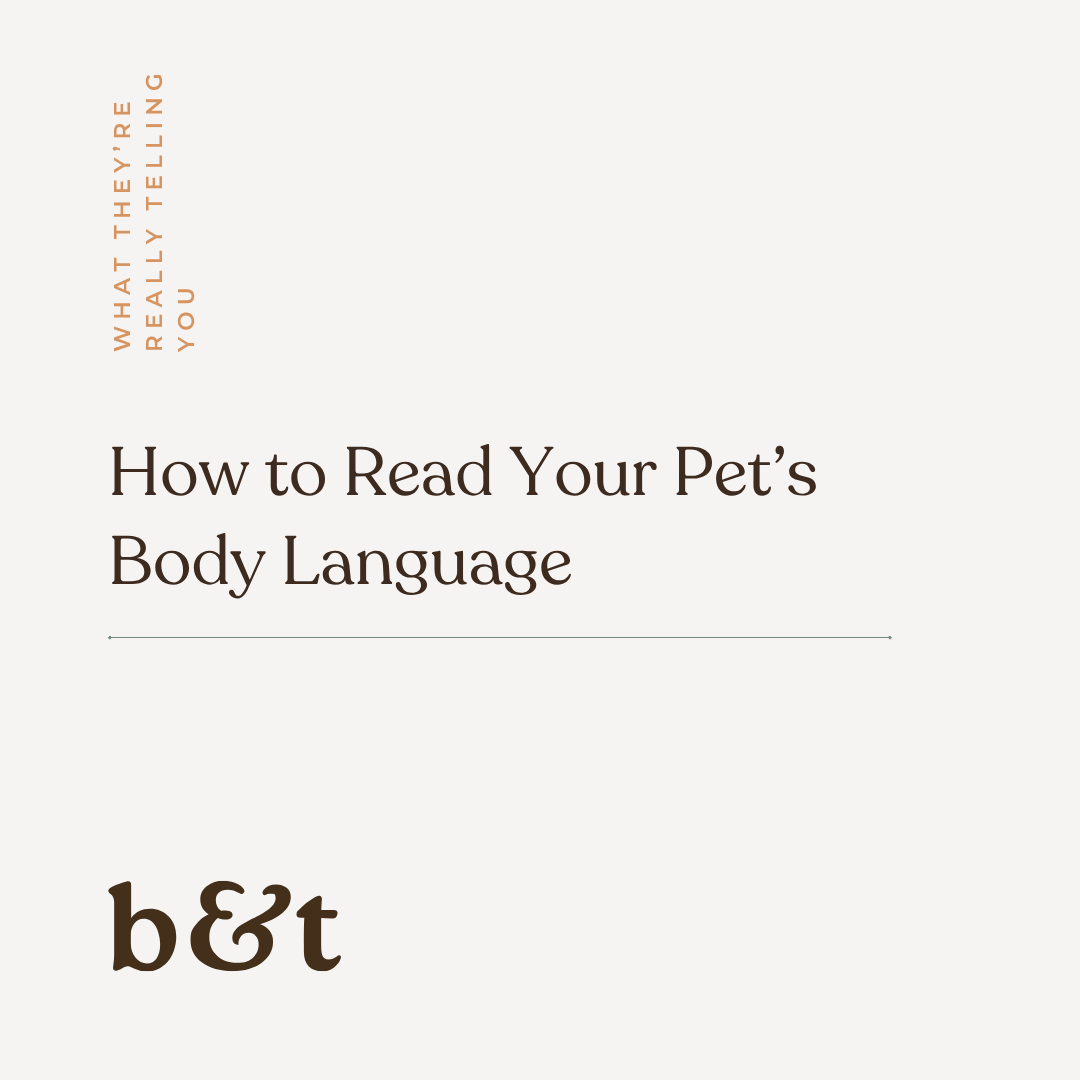
How to Read Your Pet’s Body Language
And What They’re Really Telling You
Your pet may not speak your language — but they’re speaking all the time.
In tail flicks, ear twitches, blinks, stillness, or the way they lean into your hand — dogs and cats communicate with an emotional fluency that’s deep, subtle, and incredibly honest. And when we learn to listen with our eyes and intuition, something beautiful happens: we start to understand each other without words.
At Beats and Tails, we believe that emotional care starts with presence. That by reading your pet’s body language, you’re not just being observant — you’re building trust, safety, and an unspoken bond.
Why Body Language Matters
Cats and dogs feel everything. They pick up on tone, tension, silence, and space. But they show their feelings differently than we do — through behavior that often gets misread as “stubborn,” “shy,” or “naughty.”
Learning their body language helps you:
-
Prevent stress before it escalates
-
Understand what makes them comfortable
-
Deepen emotional connection
-
Create safer, more intuitive routines (like grooming, feeding, or traveling)
Your pet is always saying something — the question is: are we listening?
Dog Body Language: Key Cues
Signs of Calm & Comfort
-
Soft eyes, ears relaxed
-
Loose, wiggly body
-
Gentle panting
-
Wagging tail (low and slow = relaxed, fast and loose = happy)
-
Lying down with an exposed belly
-
Leaning into you
Signs of Stress or Overwhelm
-
Yawning repeatedly (not tired)
-
Lip licking or nose flicks
-
Tucked tail, hunched posture
-
Whale eye (white of the eye visible)
-
Pacing, shaking off
-
Avoidance or excessive stillness
Cat Body Language: Key Cues
Signs of Trust & Safety
-
Slow blinking (the feline “I love you”)
-
Tail upright with a soft curve
-
Purring gently
-
Headbutting or cheek rubbing
-
Relaxed loaf position or exposing belly (only if they feel 100% safe)
Signs of Discomfort or Tension
-
Ears back or twitching
-
Tail flicking or thrashing
-
Dilated pupils
-
Sudden grooming (self-soothing)
-
Hiding or frozen stillness
-
Growling, hissing, or sudden swats
How to Respond With Care
-
Pause and Observe
Before reaching for your brush, food, or leash — watch. Let your pet lead the moment.
-
Adjust Your Energy
Pets mirror your state. Breathe slowly, soften your voice, and move with intention.
-
Respect Boundaries
If they pull away, pause. Let them come back to you — building trust starts with choice.
-
Reward Safety, Not Just Obedience
When your pet shows relaxed, confident behavior, reward it. You’re reinforcing not just actions, but feelings.
Every Pet Is Unique
Some dogs wag when they’re nervous. Some cats blink slowly and then walk away. Just like humans, their personalities and past experiences shape how they express themselves. Learn their patterns, their quirks, their comfort zones — and meet them there.
Listening Without Words
Reading your pet’s body language is more than a skill — it’s a kind of love. A way of seeing them as they are, in that exact moment.
Because when we pay attention to their silences, their subtleties, and their signals, we don’t just “train” better pets.
We become better companions.

